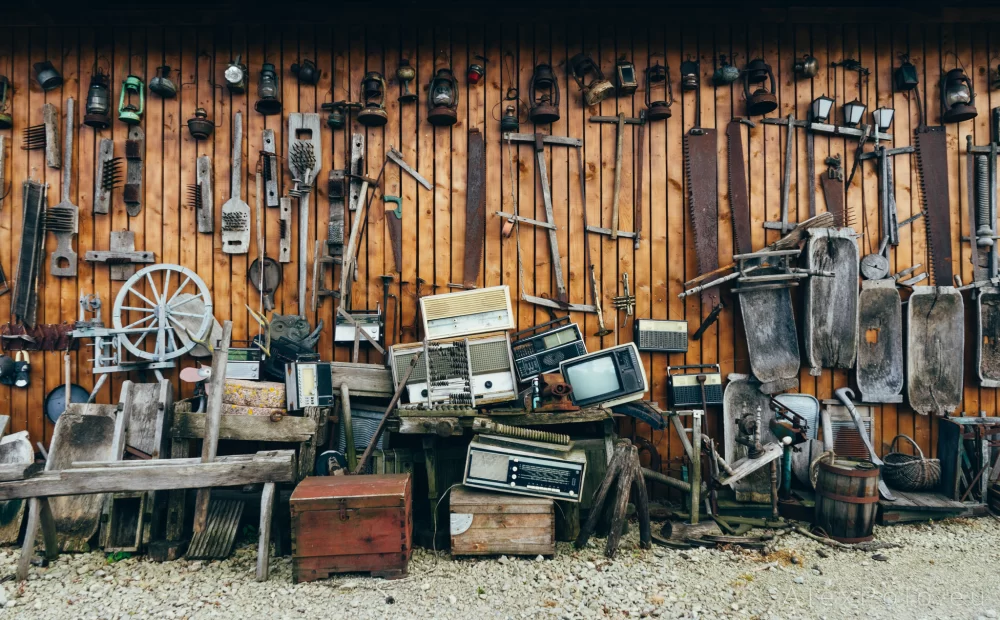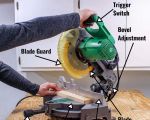Electrical Safety Tips for DIYers: Essential Advice to Keep You Safe
As a DIYer, I know the satisfaction of tackling home improvement projects on my own. There’s something incredibly fulfilling about transforming a room or fixing a broken appliance. However, when it comes to electrical work, things can get a little more complicated and dangerous. While some tasks may seem simple, electrical systems in your home are powerful and potentially hazardous if handled incorrectly. That's why electrical safety is something that every DIYer should take seriously.
In this article, I’ll share some essential electrical safety tips that I’ve learned from experience and research. These tips are designed to help you avoid accidents, ensure that your projects go smoothly, and allow you to work with confidence when handling electrical components. By following these guidelines, you’ll be well-prepared for any electrical work, whether it's installing a new light fixture or rewiring an outlet.
1. Always Turn Off the Power Before You Start
Before diving into any electrical project, the first thing you need to do is to ensure that the power is completely turned off. This may seem like an obvious step, but I’ve learned the hard way that it’s easy to forget, especially when you’re focused on the task at hand. Failing to turn off the power before starting can lead to serious accidents, including electrical shocks.
Here’s what I do: I always use a voltage tester to confirm that the circuit is de-energized. Even if I’ve switched off the breaker, I double-check with a non-contact voltage tester to ensure there’s no current running through the wires. I recommend using this simple tool—it’s inexpensive, reliable, and provides an extra layer of protection against potentially fatal accidents.
1.1. Shut Off the Right Breaker
It’s important to know which breaker controls the circuit you’re working on. If you’re unsure, it’s best to turn off the main breaker, which cuts power to the entire house. While this may not always be necessary, I find that turning off the main breaker gives me peace of mind when working with electrical systems that are unfamiliar to me.
2. Wear the Right Safety Gear
Safety should always be your top priority when working with electricity. One of the most crucial steps I take is to wear the proper safety gear. This includes insulated gloves and safety glasses. Insulated gloves help to protect me from electrical shocks, while safety glasses shield my eyes from debris or accidental sparks. In some cases, I also wear rubber-soled shoes to further reduce the risk of electrical shock.
2.1. Use Tools with Insulated Handles
When working with wires or electrical components, I always make sure that my tools, such as pliers, screwdrivers, and wire strippers, have insulated handles. These tools are specifically designed to prevent accidental electrical contact, making them a must-have for any DIYer handling electrical tasks. Insulated tools offer a crucial extra layer of safety, helping to protect you from potentially dangerous electric shocks.
3. Understand the Limits of Your Knowledge and Skills
While I love tackling DIY projects, I know that there are certain electrical jobs that require professional expertise. I’ve learned that it’s essential to recognize the limits of my knowledge and skills. For example, wiring a new circuit or working with high-voltage systems are tasks I always leave to licensed electricians. These projects involve risks that are beyond the scope of typical DIY experience, and tackling them without proper training can lead to serious consequences.
If you’re unsure about any part of your project, it’s always worth consulting a professional. I’ve learned that investing in expert help can save time, money, and—most importantly—protect my safety. Remember, some electrical tasks, like adding new circuits, may even require permits. Always check local regulations before attempting these types of projects.
4. Inspect the Wiring and Components
Another important tip is to thoroughly inspect any wiring or components you’re working with before proceeding. Old, frayed, or damaged wires can be extremely dangerous. When I work on electrical projects, I always ensure that the wiring is intact and in good condition. If the wiring is outdated or shows signs of wear, I replace it with new wire to avoid the risk of electrical fires.
4.1. Check for Overloaded Circuits
Overloading circuits is a major fire hazard, and it’s something I always pay attention to when working on electrical systems. If a circuit is already overloaded, I avoid adding additional loads to it, such as new appliances or lights. It’s essential to ensure that the circuit can handle the electrical demand without causing a short circuit or overheating.
4.2. Use the Correct Wiring for the Job
Using the right type of wire for the job is another critical safety measure. For example, if you’re installing an appliance that draws a lot of power, I always use a thicker gauge wire to accommodate the higher load. Using the wrong type of wire can cause overheating, short circuits, or even electrical fires. Always refer to the manufacturer's instructions and electrical codes for guidance on the proper type of wiring to use.
5. Follow Proper Grounding Procedures
Grounding is one of the most essential safety procedures when it comes to electrical work. Proper grounding helps to prevent electrical shocks and reduce the risk of fires. I always ensure that all outlets, appliances, and fixtures are properly grounded. For example, if I’m installing an outlet or light fixture, I always make sure to connect the grounding wire to the grounding terminal on the outlet box or fixture. If the electrical system in my home doesn’t have grounding, I hire a professional to update it. Electrical grounding is not a job I would ever take on myself.
6. Test Your Work Before Use
Once I’ve completed my electrical work, I always test the system to ensure it’s functioning properly. This might involve using a voltage tester to check outlets or ensuring that switches and light fixtures are working correctly. I also check for any unusual smells, sparks, or flickering lights. These are signs that something may be wrong, and I immediately address them before using the system further.
6.1. Always Double-Check Your Work
It’s important to never rush through electrical tasks. After completing a job, I always double-check everything to ensure I didn’t miss any crucial steps. Even small mistakes can result in serious issues, so it’s better to take a little extra time to confirm that everything is correctly installed and functioning. If I find any issues, I fix them before using the circuit or appliance.
Conclusion: Stay Safe and Be Prepared
Electrical work can be incredibly rewarding, but it’s also essential to take proper precautions to ensure your safety. By following the tips I’ve shared—turning off the power, wearing safety gear, inspecting components, and knowing your limits—you can safely tackle most DIY electrical projects at home. However, always remember that some tasks should be left to the professionals. If you ever feel unsure about a project, don’t hesitate to seek help. The key to successful and safe DIY electrical work is preparation and caution.
If you’re looking for the right tools or safety equipment to get started on your next electrical project, check out the recommendations from ToolNest to find high-quality products that will keep you safe and efficient.









